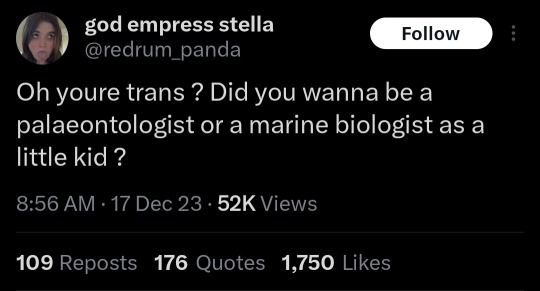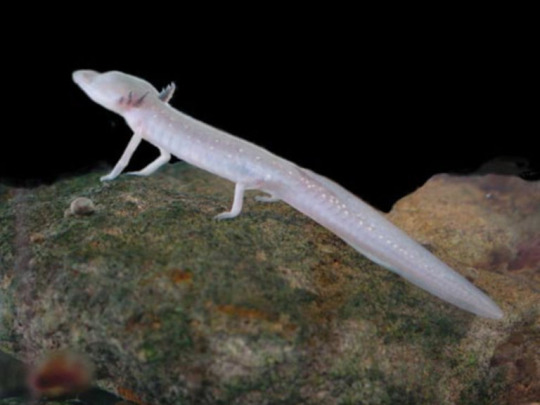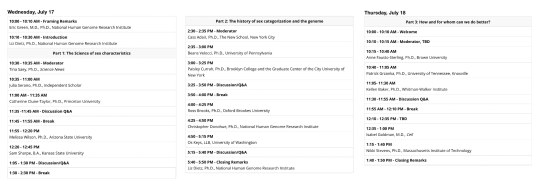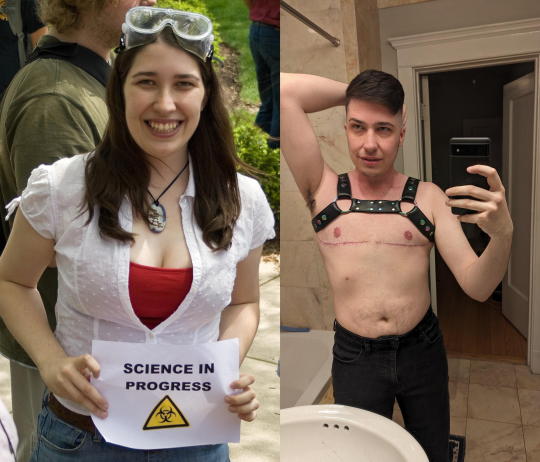#Genomic research
Explore tagged Tumblr posts
Text
A Glimpse into the Future: Preserving Humanity's DNA in 5D Crystals
Imagine a world where humanity’s DNA is safely stored, ready to be accessed billions of years from now. A team of British scientists from the University of Southampton is making this vision a reality. They have successfully encoded the entire human genome into a remarkable 5D crystal, potentially offering a lifeline for humanity if it ever faces extinction. The Science Behind the Crystal Led by…
#5D Crystal#Bio-technology#DNAStorage#Endangered Species#Extinction#Future Of Science#Genetic Preservation#Genomic Research#Hope For Humanity#Human Genetics#Innovative Technology#Life After Extinction#Memory Of Mankind#Scientific Breakthrough#sustainable future
1 note
·
View note
Text
#Genomic research & molecular diagnostics laboratory in Pune#molecular diagnostic laboratory#genomics company in india#laboratory#molecular biology training course in pune#greenarray#molecular diagnostic laboratory in pune#incubation centre in pune#pune#microarray system#covid-19 rtpcr testing#Genomic research#molecular diagnostics laboratory in Pune#Greenarray#Genetic test
0 notes
Text
Gerstner Postdoctoral Fellow Daniel Hooper (@danielmhooper) studies the genetics of color evolution in Australian finches at the Museum. He recently published a study on the genetics of color variation in Long-tailed Finches and shares his findings on why some of these finches have red beaks, while others have yellow or orange beaks. This research, recently published in Current Biology, was all catch and release.
Fieldwork photos courtesy of Daniel Hooper, Geoffrey Giller, and Simon Griffith.
#science#amnh#museum#nature#natural history#animals#did you know#fact of the day#birds#ornithology#australia#long tailed finch#research#stem#genomics#biology#museum of natural history#american museum of natural history
315 notes
·
View notes
Note

You're being targeted by the CIA on Twitter
Oh MOTHERFUCKER LMAO
Where's the option for "both, and still do"
#one of my top research labs I applied to was a paleogenomics lab that helped assemble the neanderthal and mammoth referenxe genomes#still kinda salty i didnt get in to that uni lmao
103 notes
·
View notes
Text
HOWM'ST THE FUCCCCCK DID IT TAKE ME THIS LONG TO LEARN ABOUT THE TEXAS BLIND SALAMANDER

I HAVE BEEN OBSESSED WITH OLMS FOR YEARS KNOWING THAT I'LL PROBABLY NEVER SEE ONE SINCE I DON'T HAVE THE WILL TO TRAVEL TO SLOVENIA. BUT THERE'S AMERICAN VERSIONS OF OLMS PRODUCED BY CONVERGENT EVOLUTION.
WHAT A WORLD!!!
WHAT A BEAUTIFUL WORLD!!!!!!!
#WAHOOOOOO#i mean i dont really want to travel all the way to texas either but like. there's more of a chance!#(tbh i HAVE been in texas once. but it was just the dallas airport when i was on my way to las vegas)#shitpost#olm#salamander#jury's still out on whether they're cooler than olms.#because olms have electromagnetic senses. and dragon folklore. and longass genomes.#and the wiki page doesnt mention if texas blind salamanders have any of that#i need to do more research!!!
65 notes
·
View notes
Text
My friends always tell me about that one time they decided to have a drink while writing an important paper.
And I’m like, “how tf u gonna think properly and write a long ass paper then?”
But after doing it myself, i get it!
It doesn’t make me write better but it sure does make me feel less miserable 😃
#tags are just me rambling abt my paper#who the fuck named the MAPK pathway#i havent researched enough to know why it was named that#but seriously?#map kinase#map kinase kinase#and#map kinase kinase kinase#???#I do not know how to interpret genomic sequence data#that shit took me an hour#and i hated every moment#legit the time i started drinking#persian cats are more susceptible to polycystic kidney disease !!#get them checked!!#cats in general tbh#bioremediation is a pretty cool concept tho#ive known abt it before but only researched abt it properly now#the mechanisms that several bacteria do are so damn cool#anyway#in the same fucking paper i had to explain the mechanisms of sickle cell anemia#and FPKD#those were just 2 out of the 20#my reference sheet is like 3 pages#line spacing is single mind you#good lord
8 notes
·
View notes
Text
sorry to put this on ur dash
you should help me with my research paper...
"why?" you may be asking...
plsplsplsplsplsplsplsplspls 🥺
this is the link, any answers are greatly appreciated
#tags for reach#genome editing#crispr#research#science#mad scientist#research paper#gay dead wizards#marauders#dead gay wizards from the 70s#marauders era#mauraders#crispr cas9#gene editing#please#pls pls pls
6 notes
·
View notes
Text

Meet the unsung contributor to revolutionary breakthroughs in treating polio, cancer, HPV, and even COVID-19: Henrietta Lacks. Born in 1920 Roanoke, Virginia, Henrietta's mother Eliza died when she was only four, and she was ultimately raised by her maternal grandfather in Clover, Virginia. Henrietta worked as a tobacco farmer and attended a segregated school until the age of 14, when she gave birth to a son, Lawrence. A daughter, Elsie, was born three years later --to compound the family's difficulties, Elsie had cerebral palsy and epilepsy. Henrietta and her now-husband David Lacks moved to Turner Station (now Dundalk), Maryland where David had landed a job with a nearby steel plant. At the time Turner Station was one of the oldest African-American communities in Baltimore County and there was sufficient community support for the family to buy a house and produce three more children.
In 1951 at the age of 31, Henrietta died at Johns Hopkins Hospital of cervical cancer, mere months after the birth of the family's youngest son. But before her death --and without her or her family's consent-- during a biopsy two tumour cell samples were taken from Henrietta's cervix and sent to Johns Hopkins researchers. Hernietta's cells carried a unique trait: an ability to rapidly multiply, producing a new generation every 24 hours; a breakthrough that no other human cell had achieved. Prior to this discovery, only cells that had been transformed by viruses or genetic mutations carried such a characteristic. With the prospect of now being able to work with what amounted to the first-ever naturally-occurring immortal human cells, researchers created a patent on the HeLa cell line but hid the donor's true identity under a fake name: Helen Lane.
It is no exaggeration to state that in the 70 years since her death, Henrietta's cells have been bought, sold, packaged, and shipped by thousands of laboratories; with her cells being used as a baseline in as many as 74,000 different studies (including some Nobel Prize winners). Her cells have even been sent into space to study the effects of microgravity, and were instrumental in the Human Genome Project. While no actual law (or even a code of ethics) necessarily required doctors to ask permission before taking tissue from a terminal patient, there was a very clear Maryland state law on the books that forbade tissue removal from the dead without permission, throwing the situation into something of a legal grey area. However because Henrietta was poor, minimally educated, and Black, this standard was quietly (and easily) circumvented and she was never recognized for her monumental contributions to science and medicine ...and her family was never compensated. The family remained unaware of Henrietta's contribution until 1975, when the HeLa line's provenance finally became public. Henrietta had been buried in an unmarked grave in the family cemetery in Clover, Virginia but in 2010 a new headstone was donated and dedicated, acknowledging her phenomenal contribution. That same year the John Hopkins Institute for Clinical and Translational Research established a new Henrietta Lacks Memorial lecture series. A statue of Lacks was commissioned in 2022, to be erected in Lacks's birthplace of Roanoke, Virginia --pointedly replacing a previous statue of Confederate Gen. Robert E. Lee, which had been removed following nationwide protests over the murder of George Floyd.
Dive into The Immortal Life of Henrietta Lacks by Rebecca Skloot, originally published in 2011 and subsequently adapted into an HBO movie in 2017, starring Oprah Winfrey as Henrietta's daughter Deborah and Renee Elise Goldberry as Henrietta. (And yes, this book has been challenged and banned in more than one school district.)
#black lives matter#henrietta lacks#johns hopkins#cell biology#hela#stem cell#translational research#genomics#teachtruth#dothework
64 notes
·
View notes
Link
Large Language Models (LLMs) have emerged as dynamic tools with the ability to transform the landscape of biological research in a world driven by data and technology. These advanced AI models, including well-known names like BERT and GPT, are not confined to linguistics but have found their way into the complex realm of biology. In this article, let’s explore the potential of LLMs in addressing pressing biological challenges, such as drug discovery, disease diagnosis, genomics, and more.
What are Large Language Models?
ChatGPT, along with similar models, has gained widespread attention and adoption. Many people even integrate it into their daily routines. What makes ChatGPT and similar models remarkable? These LLMs represent a facet of artificial intelligence (AI) specifically formulated to understand, process, and even create “human-like” text. Developers construct them using transformers—a type of neural network—as their architecture; they pre-train these on copious amounts of textual data to assimilate the patterns, structures, and nuances inherent in human language.
Continue Reading
#bioinformatics#large language models#llm#ai#transformers#biomedicine#clinical research#genomics#data analysis
35 notes
·
View notes
Text

07.06.24
Analog desk > everything
#gradblr#phdblr#studyblr#grad school#study motivation#studyspo#academia#study notes#genomics#quantitative research
12 notes
·
View notes
Text








#human genome#5D memory crystal#memory crystal#Optoelectronics Research Centre#University of Southampton#terabytes#humanity#extinction#Guinness World Records#digital storage#nanometer#nanostructures#data storage#optoelectronics#DNA storage#Memory of Mankind#Austria#salt cave#memory crystal technology#Isaac Asimov#Tesla Roadster#science and technology#cryogenic repo#cryogenic biorepository
3 notes
·
View notes
Text
#Greenarray is a Genomic research & molecular diagnostics laboratory located in Pune#molecular diagnostic laboratory in pune#genomics company in india#laboratory#greenarray#pune#microarray system#molecular biology training course in pune#incubation centre in pune#molecular diagnostic laboratory#covid-19 rtpcr testing#Greenarray#Genomic research#molecular diagnostics laboratory in Pune#Genetic test#molecular diagnostics laboratory
0 notes
Text
the only thing my sister and i have to offer to the rise fandom is theories about how lou jitsu's dna recombined with the turtles
#i think about this a lot. like an embarrassing amount actually#i also think about what sorts of enzymes draxum mustve thrown into the ooze to trigger it all#i think there was probably a mystic factor as well#like a mystic catalyst#the turtles (and now splinter) would be considered transgenic organisms#and i dont have a whole lot of background in transgenic techniques so its a little harder for me#there are a lot of ppl at work who are experts on making humanized mouse models so i should ask them LOL#most of my research is on rna and protein expression and not dna modification#still compels me tho#megan we should try to find if anyone has sequence aligned turtle and human dna#im curious how similar the genomes are#and also what genes and consensus sequences are shared between reptiles and humans
6 notes
·
View notes
Text

Molecular Biology
"Molecular biologists unravel the complexities of life at the most fundamental level, studying the structure and function of molecules that make up cells. Their work advances our understanding of genetics, protein interactions, and cellular processes, driving breakthroughs in medicine, biotechnology, and environmental science. Through cutting-edge research, molecular biologists are at the forefront of discovering the molecular mechanisms that govern life, contributing to innovations that shape the future of science and healthcare."
#sciencefather#Professor#Lecturer#Scientist#Scholar#Researcher#Analyst#Engineer#Technician#Coordinator#Specialist#Writer#Assistant#Associate#Biologist#Chemist#Physicist#Statistician#DataScientist#Consultant#ResearchScientist#SeniorScientist#MolecularBiology#Genomics#ProteinScience#Biotech#DNAResearch#CellBiology#LabLife#ScienceInnovation
2 notes
·
View notes
Text
This species has unique sets of microchromosomes. The genome alters itself when microchromosomes are lost when a creature ages and develops but the microchromosomes only remain in the reproductive organs.
This evolved in vertebrates being able to clone their genome in reproduction and to turn off certain genes in cells.
This creature is the origin of the complex brain, sensory organs the jaw, the limbs, and a greater number of switches that turn genes on/off.
This paper is on Hagfish phylogenomics and gene family evolution being the origin of WGD or a sister group of vertebrates to the first to have multiple sets of chromosomes.
Whole-genome duplication (WGD) evolved in vertebrates during the late Cambrian and early Ordovician periods.
We calculated the likelihood of gene duplication and loss patterns under the competing R1 and R2 hypotheses.
#biology#chromosomes#vertebrates#evolution#hagfish#genome#evolutionary ancestor#ordovician#science party#scientific research
4 notes
·
View notes
Text

By: Colin Wright
Published: May 26, 2024
It is completely inexcusable that there are no representatives who acknowledge biological sex as binary and immutable at this symposium.
One month ago, I was alerted about an upcoming symposium on sex and gender organized by the National Human Genome Research Institute (NHGRI), an institute of the National Institutes of Health (NIH), in a thread on X by trans rights activist and biologist Jey McCreight.
McCreight was responding to a series of posts by JK Rowling, who offered £1,000,000 pounds to any woman who could prove she had Klinefelter syndrome. A trans-identified male X user named Taylor came forward claiming to be “a chick with Mosaic Klinefelter syndrome,” and asked when he would be paid. Rowling responded, “The cheque will be written the moment I see proof of no Y chromosome!” To my knowledge, Taylor has not yet provided such proof.



McCreight weighed in, proudly touting her credentials: “JK Rowling is not an expert in genetics. But I am!” She then made pseudoscientific assertions about “chromosomal sex” while ironically accusing Rowling and her supporters of having a “5th grade understanding of biology.”


The following day, McCreight shared a screenshot of a message she received from the National Human Genome Research Institute (NHGRI). The message thanked her for tagging them in her post and informed her about “a two-day symposium in July that will bring together experts from the biological and social sciences to clarify (not resolve!) the complexity of sex categorization.”

Registration for the symposium, titled “Exploring the many dimensions of sex and gender in the genomics era,” opened on May 19, and the “tentative agenda” was revealed.
However, despite the event's stated purpose of bringing “experts from the biological and social sciences to clarify and contextualize – but not resolve – the complexities around sex, gender, and genomics by considering them in their scientific, ethical, and historical contexts,” the list of presenters is ideologically homogeneous, consisting entirely of activist scientists and radical gender ideologues.
Here’s the agenda:

Who are these people? Let’s take a look:
One of the speakers is Julia Serano, a self-described activist who writes about sex on her blog. Serano believes that sex is “a collection of sexually dimorphic traits" that, with the exception of chromosomes, can be changed with hormones and surgery to literally change a person’s sex. She has described the claim that “trans women are biological males” as “a myth.”
Another presenter, Beans Velocci, stated in a recent article in Cell, that “sex is an incoherent category, one that has perhaps outlived its use.” Velocci says that belief in the reality of sex categories “fuels ongoing arguments about the purportedly biological reasons that transgender (and especially nonbinary) people are not deserving of rights or do not even exist.”
And what would a symposium about sex be without Anne Fausto-Sterling? She will also be in attendance. Fusto-Sterling is responsible for the pseudoscientific assertion that there are “5 sexes” and the originator of the widely debunked 1.7% statistic for so-called “intersex” conditions. She believes biological sex is a multi-level/variate spectrum. Or a social construct. Or both. Or neither. It’s unclear.
Patrick Grzanka, an associate professor of psychology and chair of the Women, Gender & Sexuality Interdisciplinary Program at the University of Tennessee, Knoxville, will also be present. You might remember Grzankafrom Matt Walsh’s documentary, “What Is a Woman?” He was the guy who refused to say that a “trans woman” is a “male” and stated that “invoking the the word ‘truth’” was “condescending and rude.”
Then there’s Catherine Clune-Taylor, an Assistant Professor of Gender and Sexuality Studies at Princeton. Her dissertation is titled “From Intersex to DSD: A Foucauldian Analysis of the Science, Ethics and Politics of the Medical Production of Cisgendered Lives.” In a book chapter for The Routledge Handbook of Feminist Philosophy of Science titled “Is Sex Socially Constructed?”, Clune-Taylor argues that “our understanding of biological sex and its multiple material components – is shaped by socio-culturally and temporally specific meanings, and material arrangements.” She also contends that what we typically refer to as “sex differences” are “better characterized as material effects of development within a gendered environment than evidence of naturally binary sex.”
Melissa Wilson, an evolutionary and computational biologist at Arizona State, does not necessarily fit the typical activist profile. However, based on her posts on X, she appears to believe that sex is a non-binary “spectrum.”
Sam Sharpe, a PhD candidate at Kansas State University, self-describes as “a trans and intersex person” who has “been involved in trans and intersex activism since 2016.” Sharpe calls for a “more inclusive understanding of sex diversity” and believes Lia Thomas is being discriminated against for “failing to conform to expectations of cisnormative white femininity.” Sharpe says that “biological sex is complex, variable, not fully understood, and definitely not a binary,” and blames the binary view of sex on “capitalism.”
Cassius Adair, who is moderating a session, has a PhD in English from the University of Michigan. According to his website, he provides “queer and trans storytelling consulting for popular podcasts and public radio programs” and serves as a “transgender sensitivity reader.”
Paisley Currah, a professor of political science and women’s and gender studies at Brooklyn College, is also an author and trans rights activist. He published a book in 2022 titled Sex Is as Sex Does, which argues against sex classification laws.
Ross Brooks, another presenter, is a historian focusing on the “queer history of science.” He served as a contributing editor for a queer-themed edition of Viewpoint: The Magazine of the British Society for the History of Science, with the goal of “Queering the Museum.”
Christopher Donohue is a historian of science at the National Human Genome Research Institute. His research “uses the history and present manifestations of eugenics, scientific racism, ableism, heteronormativity and their complex connections to contemporary genomics and medicine to facilitate meaningful and difficult conversations that promote equity and confront past and present wrongs.” His specific views on the biology of sex are unclear, but the activist language saturating his work is indicative.
Os Keys is a PhD candidate at the University of Washington, and describes himself as a “genderfucky nightmare goth.” An LGBTQ+ activist, Keys has blocked me on X, although we have never interacted.
Liz Dietz works at the NIH and researches “bioethics as it pertains to disability rights and LGBTQ issues” designed to “let us reckon with the past.” It is unclear what her views on the biology of sex are, but the activist language in her research is suggestive.
Kellan Baker, a health services researcher at the Whitman-Walker Institute, identifies as a trans man and LGBTQ+ activist. Baker claims to “have been every letter in the LGBTQ acronym.” Baker’s research focuses on “data equity,” and Baker has argued against binary sex classification forms.
Isabel Goldman is a trans-identifying male and an inclusion and diversity officer at Cell Press. Goldman has approvingly shared the quote “Science’s rigid commitment to binary sex and gender quashes creativity and limits progress.” Goldman has also claimed that “the categorization of people into binary, immutable sexes at birth is as much of a social construct as gender is.”
Lastly, Nikki Stevens (they/them), is a postdoctoral researcher at MIT writing a book about “abolition(ist) tech and white supremacy.” Stevens works in a “Data + Feminism Lab” that studies “data activism practices of trans-led groups in the United States.” Stevens has given talks titled “Breaking the Binary.”
That’s everyone.
One thing is clear: this is not a serious symposium concerned with truth and deepening our understanding of sex and gender in genomics—it’s a gender activism strategy session. It is completely inexcusable that there are no representatives who acknowledge biological sex as binary and immutable at this symposium. It is imperative that the NHGRI extend an invitation to individuals like Carole Hooven, Emma Hilton, Heather Heying, Jerry Coyne, Richard Dawkins, or myself, who can offer a different, and scientifically accurate, perspective.
The NHGRI must immediately rectify their error.
==
This is like a conference of Flat Earthers, homeopathy, alien abductionists and Bigfoot hunters.
Note: "Jey" McCreight is Jen McCreight, who organized "Boobquake," a rally which came in reaction to nonsensical Islamic pseudoscience.
https://en.wikipedia.org/wiki/Boobquake#Inception
The Boobquake rally served to protest news reports of controversial beliefs espoused by Hojatoleslam Kazem Seddiqi, an Islamic religious authority in Iran. Seddiqi blamed women who dress immodestly for causing earthquakes. On April 19, 2010, it was reported that Seddiqi advised his listeners that "Many women who do not dress modestly lead young men astray, corrupt their chastity and spread adultery in society, which increases earthquakes" and Iranians should "adapt their lives to Islam's moral codes" to avoid being "buried under the rubble".
She subsequently cut off her boobs and claims she's a "he/they."

"Science in progress." 🤡🤡🤡
#Colin Wright#National Human Genome Research Institute#National Institutes of Health#gender ideology#pseudoscience#gender pseudoscience#anti science#gender identity ideology#biology denial#science denial#biology#biological sex#sex is binary#sex binary#religion is a mental illness
4 notes
·
View notes